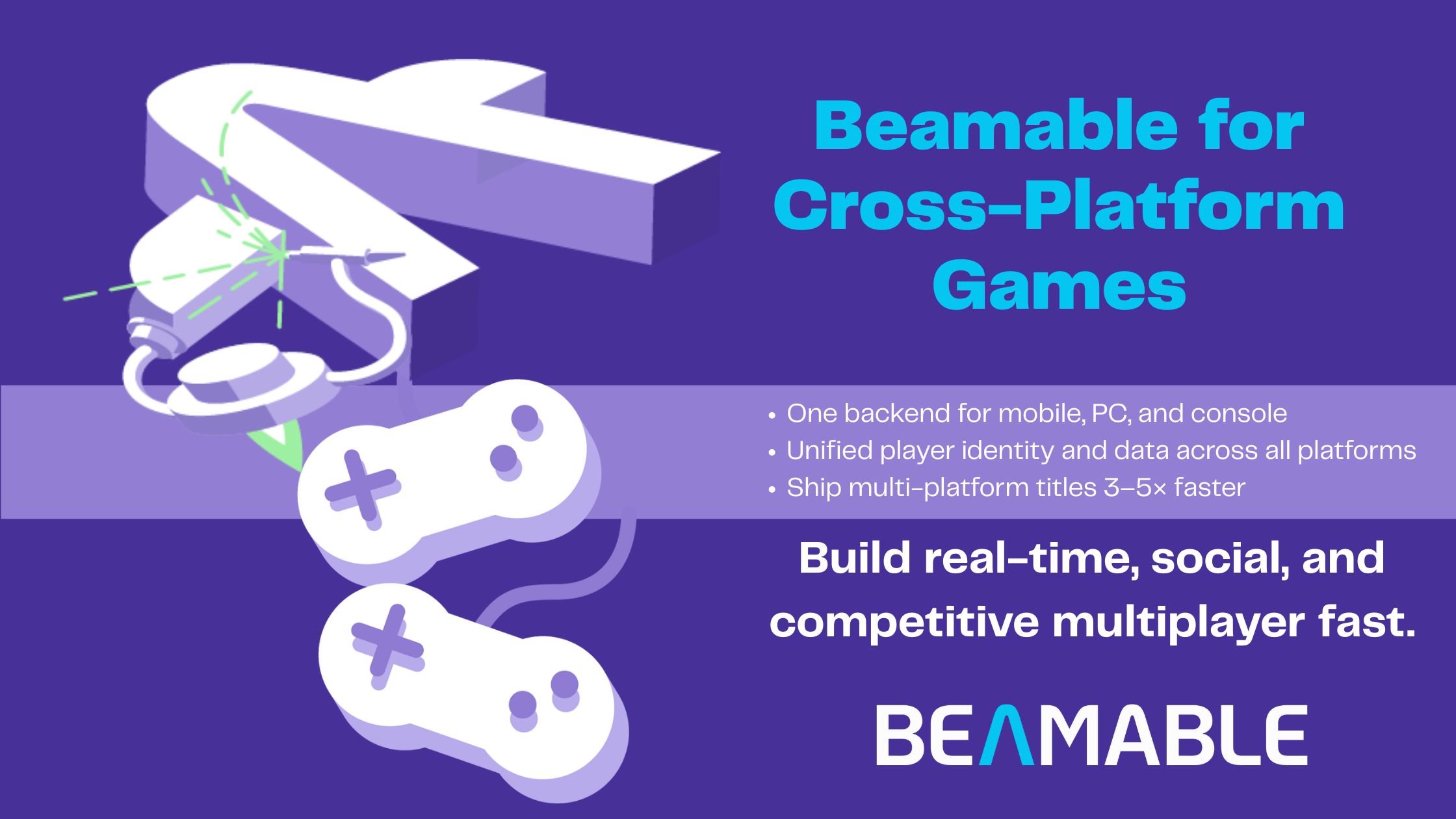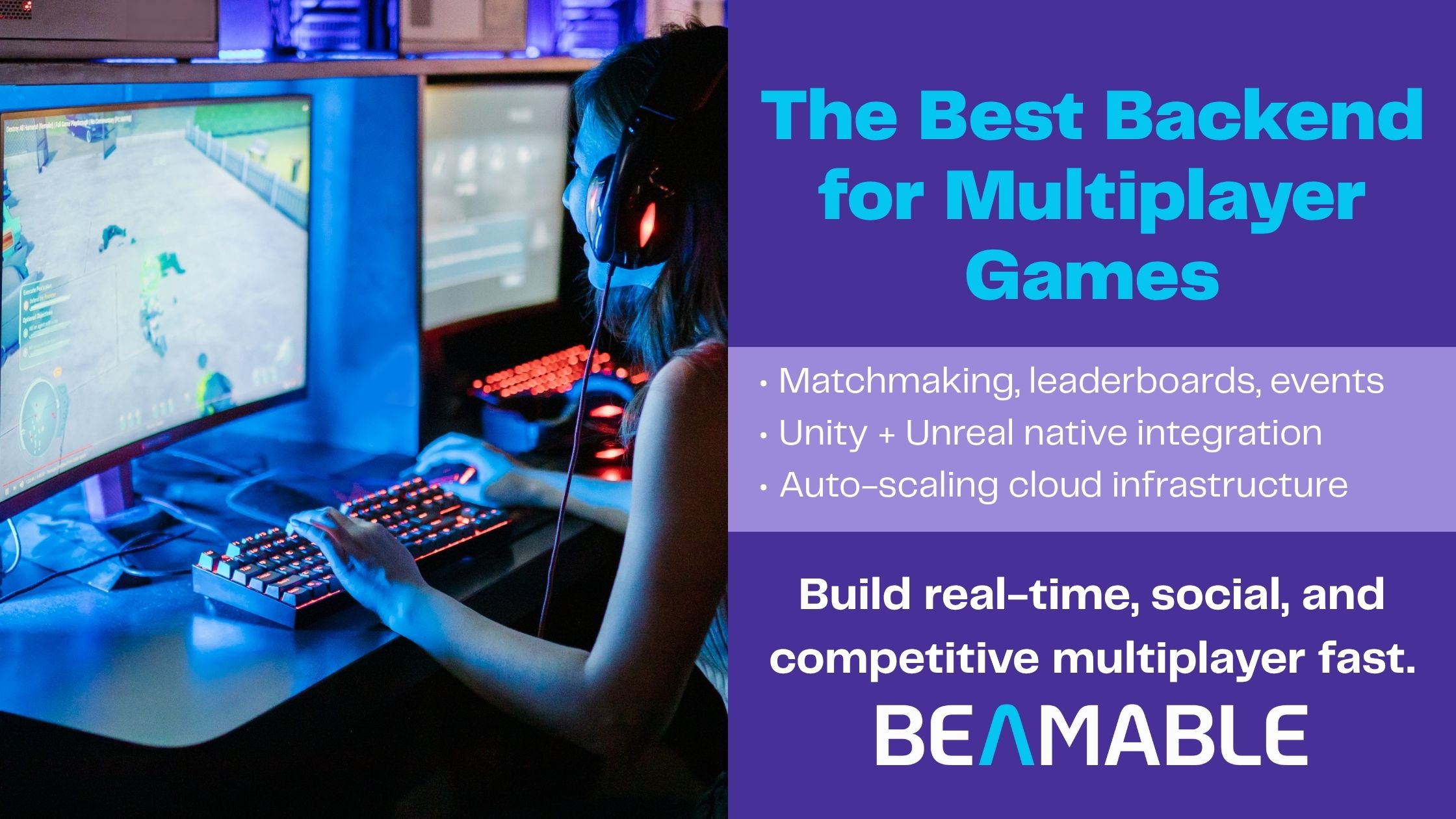Introducing Beamable’s Managed Inventory Service

Introducing Beamable’s Managed Inventory Service
This article is about Managed Inventory: how it simplifies life for game developers and live ops staff–getting your game to market faster, managing things easier, and ensuring that you’re equipped with an extensible, scalable platform for operating your online game.
Managed Inventory is part of the Beamable Data Fabric: it provides an extensible, unified means of managing the items that comprise your game’s virtual economy. The benefit of Managed Inventory is that you gain access to a network of business features to boost lifetime value–without spending valuable time on data-adaptation projects, addressing permission systems, ETLs, and other bridges between game systems and important business systems.
All of the Beamable core systems “just work” with your items–and as new modules are created (either stock components from Beamable, or from the growing marketplace of third-party integrations), those advantages just snap into place. Let’s take a look at what we mean by this; the following diagram shows the many modules and people who interact with a game’s economy:
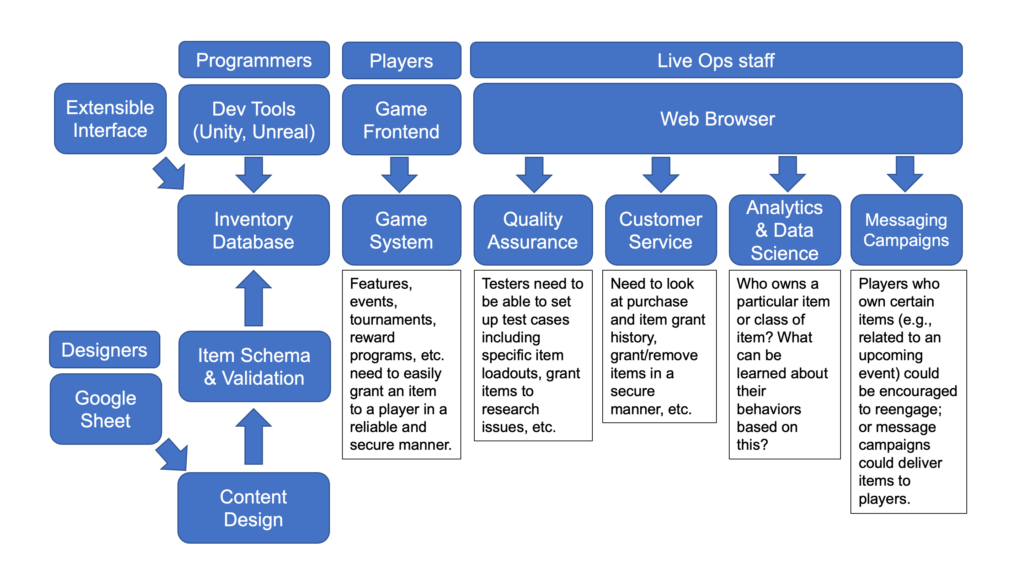
From this, we can see a number of systems are needed:
- Designing and maintaining the schema of items in the game
- Validators that check to make sure parameters assigned to items are within the appropriate bounds
- Connecting the game items to servers (to maintain state in the persistent world, enforce game rules in a server-authoritative manner, and update records atomically)
- Connecting the game items to the player experience (attaching them to front-end behaviors, UI, graphics)
- Facilitating Quality Assurance procedures (setting up test cases with specific item load-outs, investigating issues, etc.)
- Customer Service operations like looking at the item history for a player, adding/removing items and currencies, etc.
- Dashboards for analytics & user segmentation related to item utilization
- Forwarding of item data to sophisticated data science modules for applications like AI-driven offer optimization, advanced predictive modeling, lifetime value (LTV) prediction, etc.
- Messaging campaigns (targeting players with messages or device notifications who have obtained certain items–or gifting items as rewards to players)
Similarly, the types of people who need access to these systems–and the ideal interfaces for accessing these systems–are varied:
- Programmers usually prefer to work within their 3D engine environments
- Game designers might configure item schemas and attributes in a spreadsheet
- QA personnel may need access to a “cheat code” interface that grants/removes items
- Customer service needs a web-browser interface that lets them inspect account histories and make adjustments
- Product managers and data scientists need access to a combination of high-level dashboards as well as access to underlying item utilization data
- Marketing and live ops staff need to be able to create messaging campaigns that target specific segments of players
Off-the-Shelf Services
Beamable comes equipped with a number of stock services that make it easy to manage your game. Assigning items to events; account management interfaces for customer support to assign/revoke items; QA interfaces; and developer interfaces for Unity and Unreal are a few of these examples.
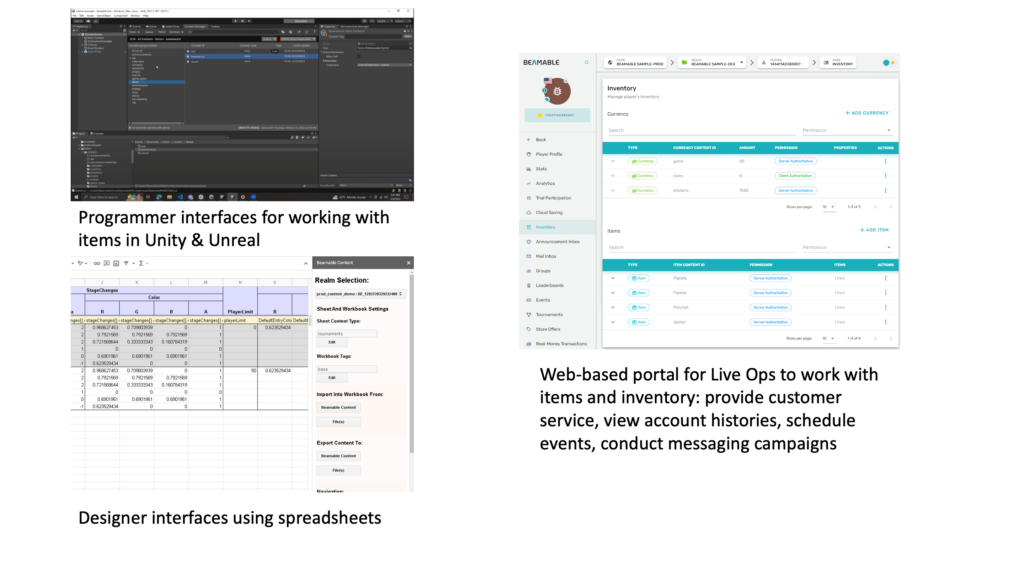
Deployment Process
Developers work on individual features that flow into a continuous integration (CI) process, while designers; content-creators make new items, and assign items to rewards, events, and systems; and all of these new items need to be tested, and then synchronized with live updates for players.
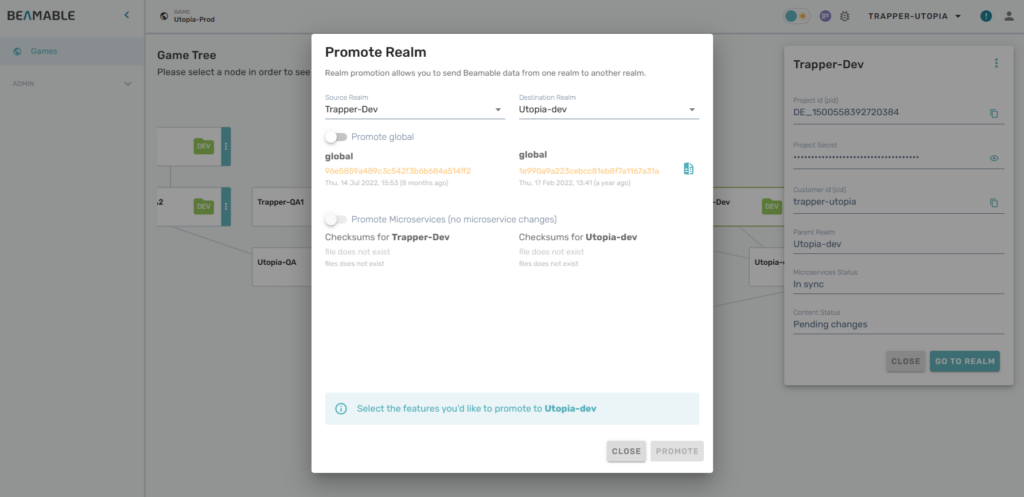
This progression from development to testing to production frequently involves a large number of manual processes and scripts which are usually brittle, cumbersome, and error-prone. Beamable deploys all of the item information alongside other code and content changes to ensure that the live game environment receives tested and appropriate updates–when and where you want them.
Access Controls
Since there are a variety of interfaces and user types, you’ll need an access control system to control who is able to perform specific actions across the various user populations–spanning all of the realms

Validations
When a lot of people are involved in updating item data, errors can easily propagate–requiring complicated testing procedures. While testing is always a good idea, Beamable mitigates a lot of risk to your item economy by establishing validations. Because items are treated like another form of “content” in Beamable, they benefit from the same robust content validators that are built-in to the platform.

Full-stack Visibility and Extensibility
With Beamable, you have visibility into the entire software stack–including how you interact with data such as items. No more working with multiple IDEs, different data exploration UIs, or disconnected debugging processes. This is because the cloud-native microservices architecture Beamable is built around allows developers to locally instantiate the managed inventory environment, perform integrated debugging across both game frontend and backend, and add their own powerful extensions to how your game utilizes items.

Extensibility
Because the Beamable environment is flexible and extensible, you can add your own capabilities–or easily integrate third-party functionality. Some of these use cases include:
- Automated integration of managed inventory with blockchains for Web3 games
- Hooks into Generative AI APIs to generate item art and descriptions as part of the production process–or live, while players enjoy the game
- Hooks into offer-optimization systems that look at purchasing histories and structure item bundles that maximize lifetime values
- Forwarding important events related to item assignment, consumption or economic transactions to analytics and data-science modules
Further Reading
Managed Inventory is just one part of Beamable’s fully-integrated platform for live services: an end-to-end system to accelerate the creation and operation of live games. Here are some ways to learn more about Beamable:
- Start playing with Beamable for free in our multi-tenant cloud
- Learn more about the Private Cloud edition–where you can run the entire Beamable software on your own infrastructure
- Download the Beamable Technology White Paper


